‘The Legend of Zelda: Tears of the Kingdom’ Is a Perfect Video Game
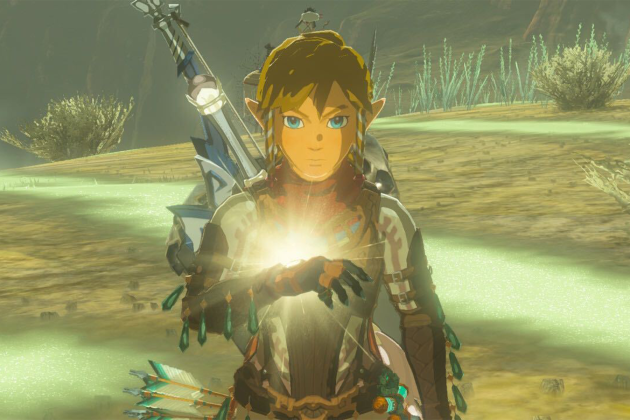
When it arrived in 2017, The Legend of Zelda: Breath of the Wild changed everything. Abandoning comfortable formulas the series had leaned on for almost 30 years, it instead focused on one very simple premise, one that the original game in the series was predicated on: discovery. Pure, unfettered discovery.
That alone isn’t an original concept, but its execution is what hit. Gamers have come to expect a certain type of hand holding, even in “hardcore” open world titles, and Breath of the Wild was not playing by the same set of rules. No direct paths to follow or overpowered leveling. When it rained, you slipped. When it snowed, you froze. Even your weapons broke if you used them too often.
More from Rolling Stone
Breath of the Wild brought you into its world. It was up to you to live in it, learn it, and love it. Many (us included) considered it the best Zelda title ever made — if not the greatest game ever made. With unfathomable pressure to follow up, with a direct sequel no less, the question everyone has been asking is, “How could they possibly do it better?”
Well, they did it better.
So much better, in fact, that there’s no real way to even speak about The Legend of Zelda: Tears of the Kingdom without sounding hyperbolic. Addressing every complaint leveled at its predecessor, turning up everything else to 11, and tripling down on the core philosophy of discovery, Nintendo has created what might be its magnum opus. An ever-unfurling nesting doll of new mechanics, locations, narrative, and scope, it’s a game that utilizes just about every great idea the series has ever had, coalescing them with so many new ones that you’ll still be learning 150 hours in.
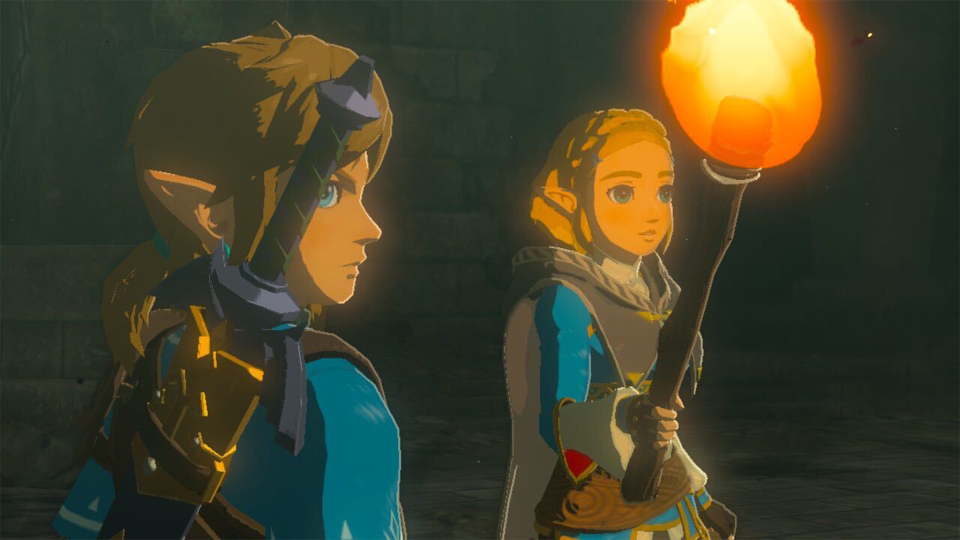
So, what is it? What makes this game the second coming of Hyrulean Christ?
As a direct sequel, Tears of the Kingdom picks up shortly after Breath of the Wild in a world basking in the glow of salvation. Royal knight and princess-protector Link successfully returned from a 100-year slumber to unite the fractured kingdom of Hyrule, defeat the villainous Calamity Ganon and free the titular Zelda, who had been frozen in time holding evil at bay. Alas, the time to revel is cut short as things quickly go sideways.
Opening cinematically, Tears of the Kingdom sees Nintendo flexing more mature storytelling muscles. In a dark tomb lit by torchlight, Zelda and Link creep into the depths searching for answers about what is causing “decay” across the kingdom. They’ll regret what they find, stumbling across a crusty corpse (who’s soon to be very well-hydrated). Awoken by their presence, the reanimated Demon King Ganondorf instantly resets the status quo as his overwhelming might drains Link his life and drops Zelda into the abyss. The Master Sword shatters, our hero loses an arm, and the princess is adrift amid time and space.
Link wakes up some time later in a cave. He’s got a new, mystically enhanced arm and a voice in his head. Outside, things are fucked. Chunks of earth have risen thousands of feet in the air; the whole world is topsy turvy. There’s nothing left to do but jump right in.
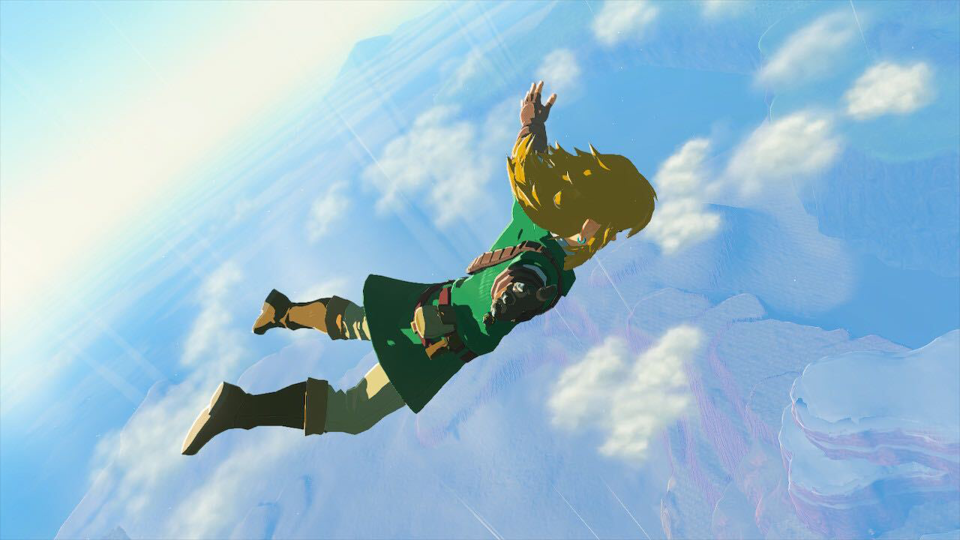
With this opening sequence, Nintendo immediately sets a new tone. Whereas Breath of the Wild relished in melancholy, Tears of the Kingdom leans into urgency. The central conceit of its predecessor was that Link woke up a century after losing the fight and had to wander a world that had mostly moved on, trying to pick up the pieces to set things right. Here, there’s no contentment with what happened, it’s happening. Zelda is missing, the world is literally falling apart, and something needs to be done, now.
The mystery of Zelda’s disappearance and the sudden emergence of islands in the sky have a profound impact on the world. Breath of the Wild’s story was straightforward: Here’s a map, Ganon’s at the center. Kill ‘em. You can explore the vast open world, grow stronger, help garner allies and right past wrongs, but in the end it’s all to service that ultimate goal. You can technically do it right from the start.
Here, the overlapping mysteries of Zelda’s fate, what’s happening everywhere, and whodunit give the story (and players) greater direction. The world hasn’t stopped and is livelier than ever. Given that Link has a knack for disappearing (for a century at a time), the people of Hyrule have decided to take matters into their own hands. Again, that sense of urgency arises as the NPCs of the world — many returning faces or minuscule characters from before now given new purpose — are actively trying to save themselves by building militias and, more importantly, research agencies to study the falling ruins from the sky. Evocative of stories from Marvel or, more closely, certain Godzilla movies, where regular people living in a calamitous world desperately band together to fight back, the setting directly addresses the complaint that Breath of the Wild was too empty or lifeless.

If there’s a world teeming with life, you’ll naturally want to explore it, right? That’s the next area where Tears of the Kingdom stands apart from its predecessor. Breath of the Wild was celebrated for perfecting the open world genre by breaking its conventions. Many open world games struggle with how to direct players to its depths, often using totems or distant landmarks to draw players’ attention. Skyrim’s famous selling point was, “You see that mountain? You can climb it,” and you could! Clumsily. But the illusion is broken when you naively wander into an endgame space filled with overpowered enemies you’re not yet equipped to handle. Other games, like Sony’s Horizon series, curb this by locking off entire regions of the game, spooling out discovery in digestible playgrounds as the linear narrative propels the façade of freeform exploration.
Breath of the Wild freed itself by adhering to a minimalist narrative that’s almost entirely optional to experience in full. Memories were scattered across the world that painted in the picture, with diaries and hearsay coloring in the margins. There were a handful of major points of interest across the map, available in any order, that drove players to discover every region’s nooks and crannies at their own behest.
Tears of the Kingdom follows this same principle but with deeper purpose and effect. The “memory” format returns, as scattered glyphs across the kingdom can be discovered that unveil the fate of the missing princess and provide narrative context. Simultaneously, there are active questlines steeped in the current crises facing the world that also draw players between regions. Combined with longer ongoing side adventures and, of course, small favors, missions in this game are clear, well written, and mercifully avoid busywork.
There’s a certain type of player (me) who, upon seeing a quest marker or destination, instantly turns about face and runs in the opposite direction. Why do the thing you’re supposed to do when you can do anything else? Nintendo has seemingly cracked our psychology, as the design of questlines places them strategically and conveniently omnipresent.

Every direction leads to progress — you can’t spin your wheels. Early on, I immediately eschewed what I thought to be the obvious direction for narrative progression and spent a few good hours spelunking in catacombs. I stumbled across one of the game’s most vital abilities (seemingly haphazardly). It’s a Pavlovian reward system for procrastinators that celebrates doing things your own way, whichever way that may be.
And what ways there are. One of the biggest internet anxieties surrounding the game was how the developers would create something worth six years of waiting utilizing the same overworld and setting. Most direct sequels in the franchise carry over mechanics, but still find a new setting to keep things fresh. But like a legend reimagined, Nintendo has given new life to this iteration of Hyrule.
Yes, the entire overworld exists as it was in the last game, but the cataclysmic events of the opening have changed just about everything you remember. Towns are in ruin, way stations are repurposed for triage or research, each of the major regions and locations from before are under turmoil in ways that make every old feel new again.
Other games, like last year’s God of War: Ragnarök, have also done this to great effect, but what separates Tears of the Kingdom is what lies beneath. And above! On top of the sky islands that have appeared, Hyrule apparently has a Skull Island-esque hollow earth scenario going on. The entirety of the overworld can now be explored three ways: the surface, the sky, and below. Yes, the map has tripled in size and is broken into layers, all of which can be explored separately and interlink, with questlines and progression scattered across every layer like video-game lasagna.
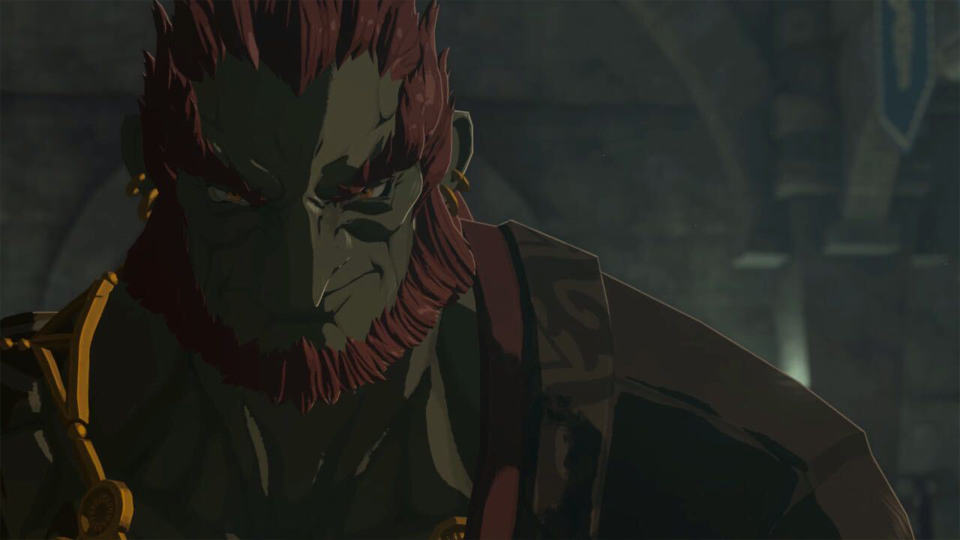
With exploration crossing multiple axes, navigating Hyrule can feel like 4D chess, requiring players to think with multidimensionality about where they are in correlation to the world to solve puzzles and meet goals. The layering of the map ostensibly turns the entire world into one big Zelda dungeon, but Nintendo didn’t stop there, because actual dungeons also return. Breath of the Wild famously omitted the series’ hallmark of themed dungeons to explore, replaced instead by 120 bite-sized puzzle shrines and four Divine Beasts that functioned as half-stops to scratch the dungeon-crawling itch. Here, more traditional dungeons return to all their glory. And glorious they are.
As with the story and setting, dungeons presented here are easily the most epic they’ve ever been in the series. The first one I tackled shot me into the sky to traverse ancient ruins besieged by a fleet of ethereal ghost ships circling a cyclone in the clouds. In the eye of the storm, I battled a hulking aerial beast that was just one of many “oh shit” moments throughout my journey.
But you’re not on the journey alone, either. While Breath of the Wild tasked Link with finding four regional champions that represented the different peoples of Hyrule to unite in the fight against Ganon, they almost completely left the narrative after enlistment, biding their time to help make the final battle a little easier. Here, Link can find sages from each of the world’s four non-standard humanoid races (Riot, Gerudo, Zora, and Goron) to actually join in the moment-to-moment fight.
Companions are nothing new to the series, but they’ve exclusively played a passive role in games past. Navi, Midna, and the Wind Waker’s talking sailboat all serve to guide Link to his goals and provide hints. Here companions are closer to more modern games like (again) God of War: Ragnarok and impact the tide of battle. They have their own storylines, goals, and three-dimensional personalities. They banter, bicker, and imbue heart to the proceedings in enriching ways. As with the unspooling mysteries, they drive players to new regions in anticipation of meeting the next few faces.
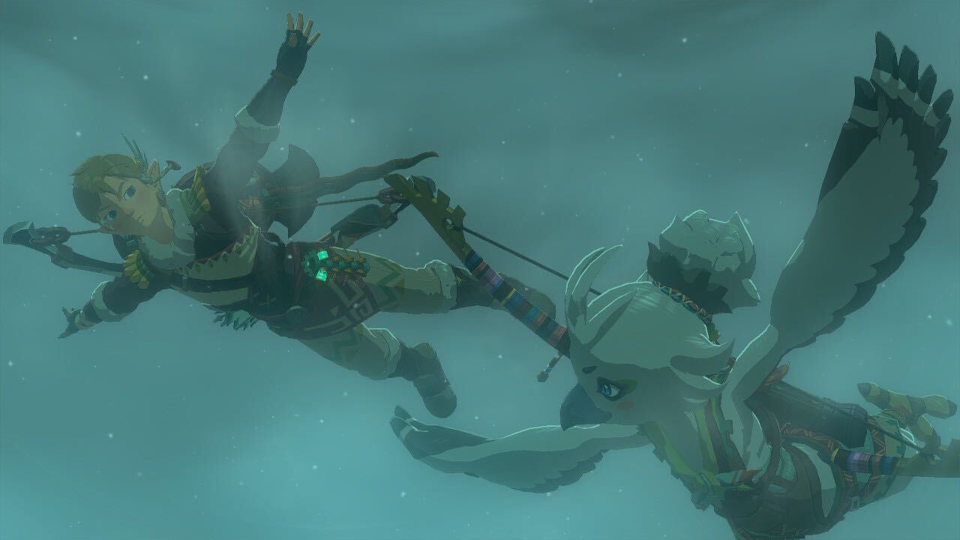
So, there’s a Homeric story, a gargantuan open world, and an array of compelling characters working in tandem to create a deeply satisfying and complex game. Now take all of that and add Minecraft. No, seriously. Just all of it right on top.
Not content to rethink how its entire world and story work, Nintendo also decided to lean hard into the most popular aspect of Breath of the Wild: its physics-based fuckery. Outside of just being a big game, 2017’s Zelda entry was a hit with players who wanted to break it. With an engine built on complex physics and elemental mechanics that could be exploited in endlessly entertaining ways, part of the game’s longevity has been with players simply playing in the sandbox.
Rather than rein in control, Nintendo uncharacteristically doled out more. Replacing the simpler abilities from before – Remote Bombs, Cryonis, Magnesis, and Stasis – with even more mind-bending powers that practically dare players to shatter the game’s reality with their own meta. As detailed in our hands-on preview, there are four flavors: Ascend, Recall, Ultrahand, and Fuse.
Ascension is the simplest, playing into the verticality of the new world by allowing players to flat-out shoot directly up like a bullet through most ceilings and overhead platforms. In a cave at the base of a mountain? Use Ascend to instantly burrow through to its peak. It’s often the easiest to forget, as players’ brains simply haven’t been trained for this level of mobility in exploration.
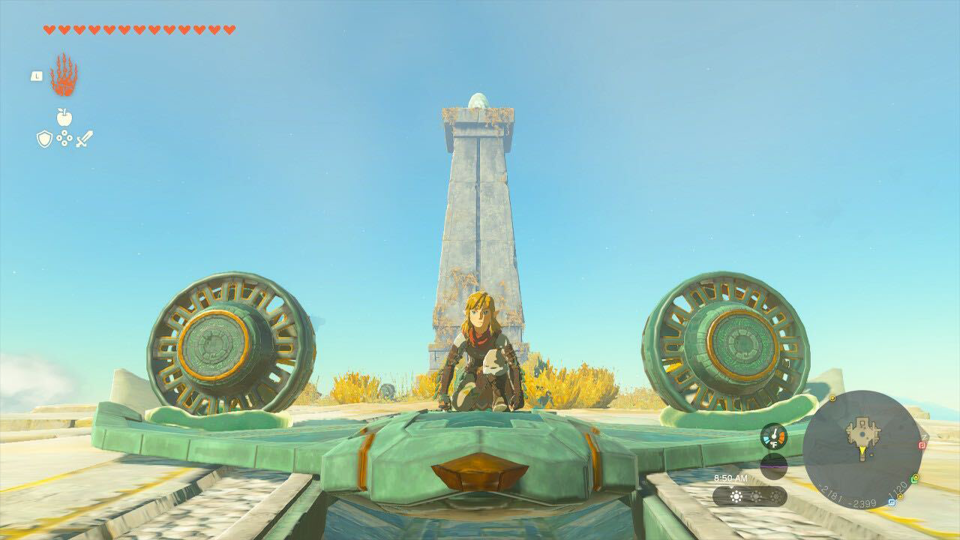
The other tools are where things get truly wild. Ultrahand and Fuse function as two sides of the same coin. Simply put, everything in this world is a tool. Metal boxes, enemy bones, apples plucked from trees — every item can be crafted together as either a vehicular construct (think anything from hot air balloon to tank) or fused together for combat.
The game goes through great lengths to show you the potential of Ultrahand. Many of its puzzles are dependent on building makeshift boats or planes to traverse the seas and skies. Even the enemies have built their own constructs, with previously primitive bokoblins and moblins cruising across the land in Mad Max-like death mobiles hobbled together from scraps. Inventive players have and will immediately set aside just about everything else in the game to build behemoth mechs.
With fusion, Tears of the Kingdom reinvents the entire concept of its combat systems. The biggest sticking point for many in Breath of the Wild was the weapon durability system. Got a favorite sword? Too bad, it’s going to break eventually. The intent was to teach players to think strategically and utilize everything at their disposal to prevail. If you’ve only got one swing left in your sword, remember that it’s metal and there’s a lightning storm coming; drop in an enemy camp to draw electricity and start a brush fire instead. Some people just didn’t get it.
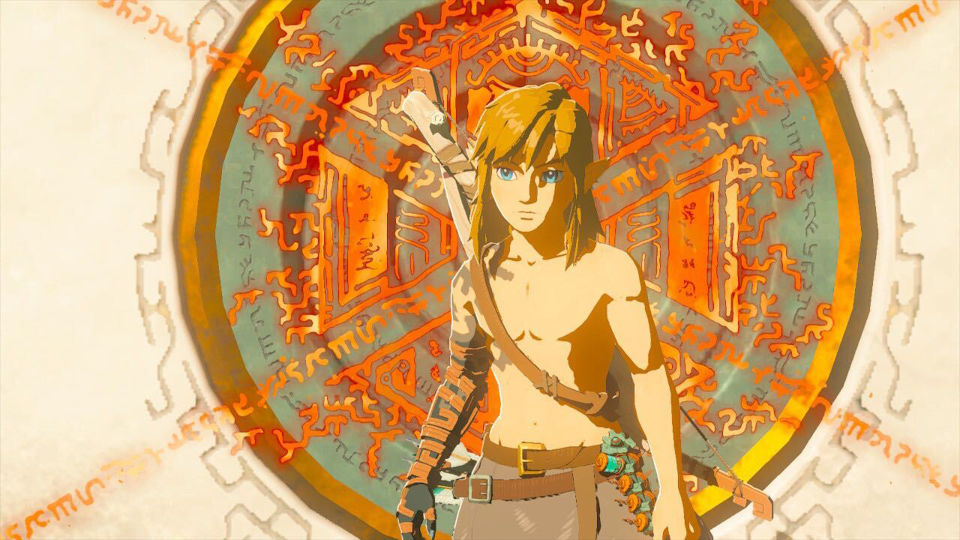
Now, you’d have to try not to get it. See this stick? Attach a rock on the end and now it’s a hammer. Put an eyeball on an arrow? It’s a homing arrow now. Rather than being confined to what gear the game provides you, there are seemingly endless variations on what you can utilize at any given moment. You can do anything, or at least it feels like it.
Take this scenario: Wandering through a scenic hillside, I see a cabin in the distance surrounded by wooden spikes and, undeterred by big Walking Dead vibes, I drop in to save the owner. Except it’s an ambush, leaving me in a game of death with two Yiga clan ninjas who can one-shot my woefully underpowered ass. Desperate for a solution, I turn to my inventory and cycle through, before stopping on a flamethrower. It’s not inherently a weapon — it’s for building — but I could stick it on my shield. Now I’ve got a shield that emits flame, holding the enemies at bay, interrupting and punishing their attacks while I chip away at their health.
This wasn’t necessarily the right way to solve the problem, but like eating a Reese’s, there’s no wrong way to play Tears of the Kingdom.
It’s this mentality, the purest distillation of player choice ever seen in The Legend of Zelda title — potentially in any AAA video game ever released — that is the soul of the game. Defined by contrast, the story is deep and epic in scope, yet can totally play out in any order you see fit. The gameplay allows you to do practically anything you can imagine but is somehow still simple and intuitive. It is all very, very big, but is entirely driven by the minutiae of little moments and decisions.
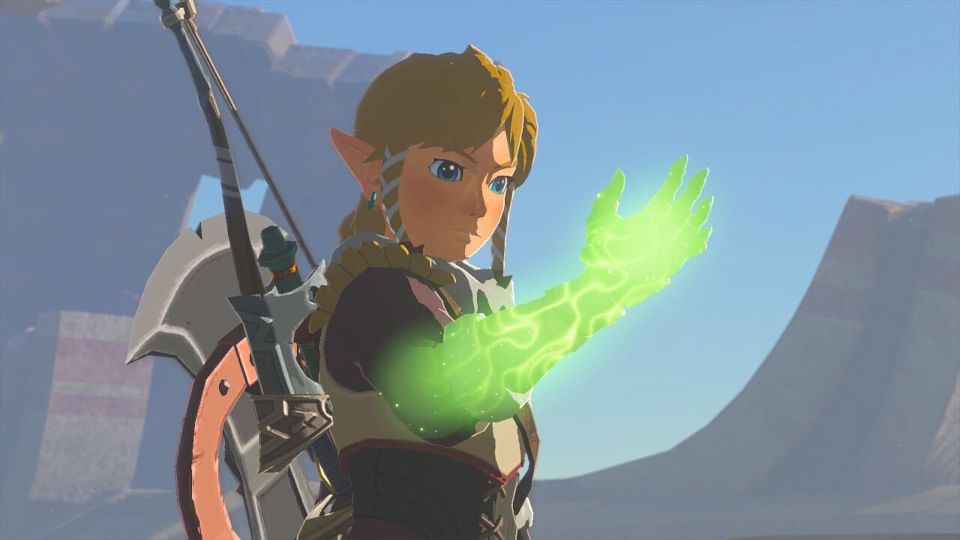
Playing Tears of the Kingdom can be a strange experience. Throughout the never-ending cycle of eureka moments, you’ll often take pause to wonder if you’re actually playing the best game ever made. For me, that pause came about every 45 minutes or so … for the first 20 hours. If it follows the trend, people may be wondering this for the next 20 years.
The Legend of Zelda: Tears of the Kingdom is proof that you can never count Nintendo out. On dated handheld hardware in a crowded industry filled with big-budget competition experiencing a creative resurgence, Nintendo has once again set the standard by which everyone else will be measured. The legend is reborn.
The Legend of Zelda: Tears of the Kingdom is now available on Nintendo Switch.
Best of Rolling Stone

